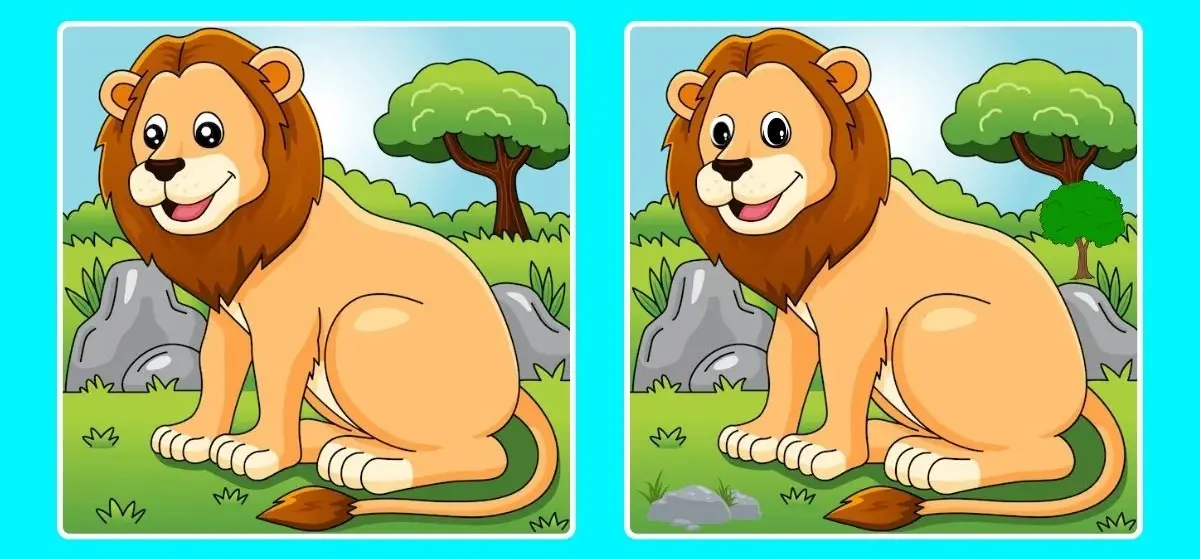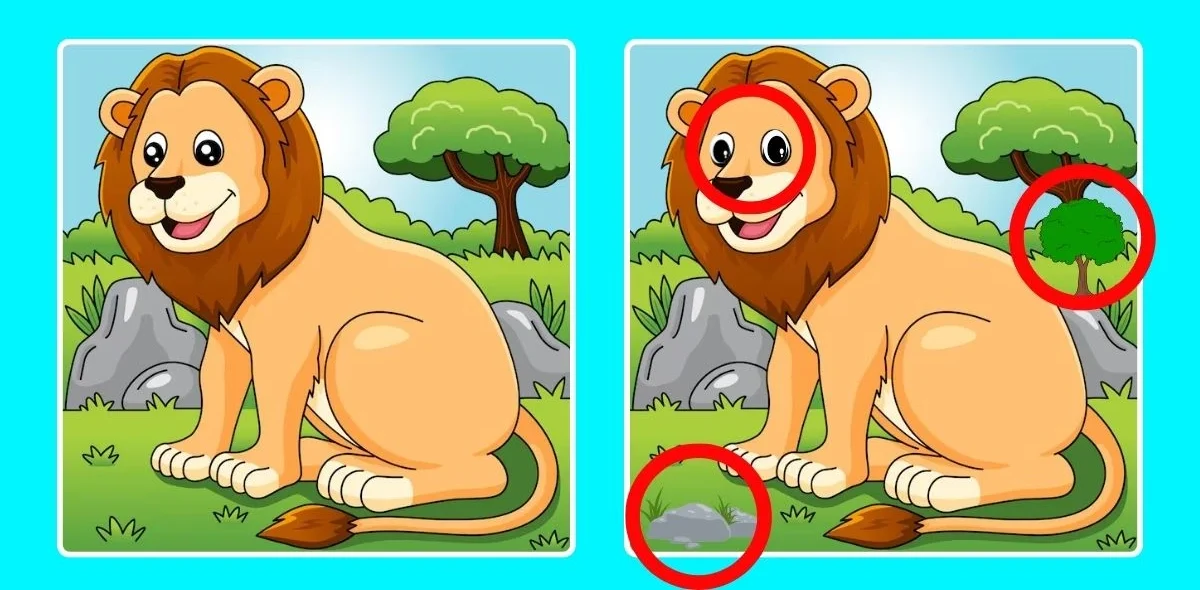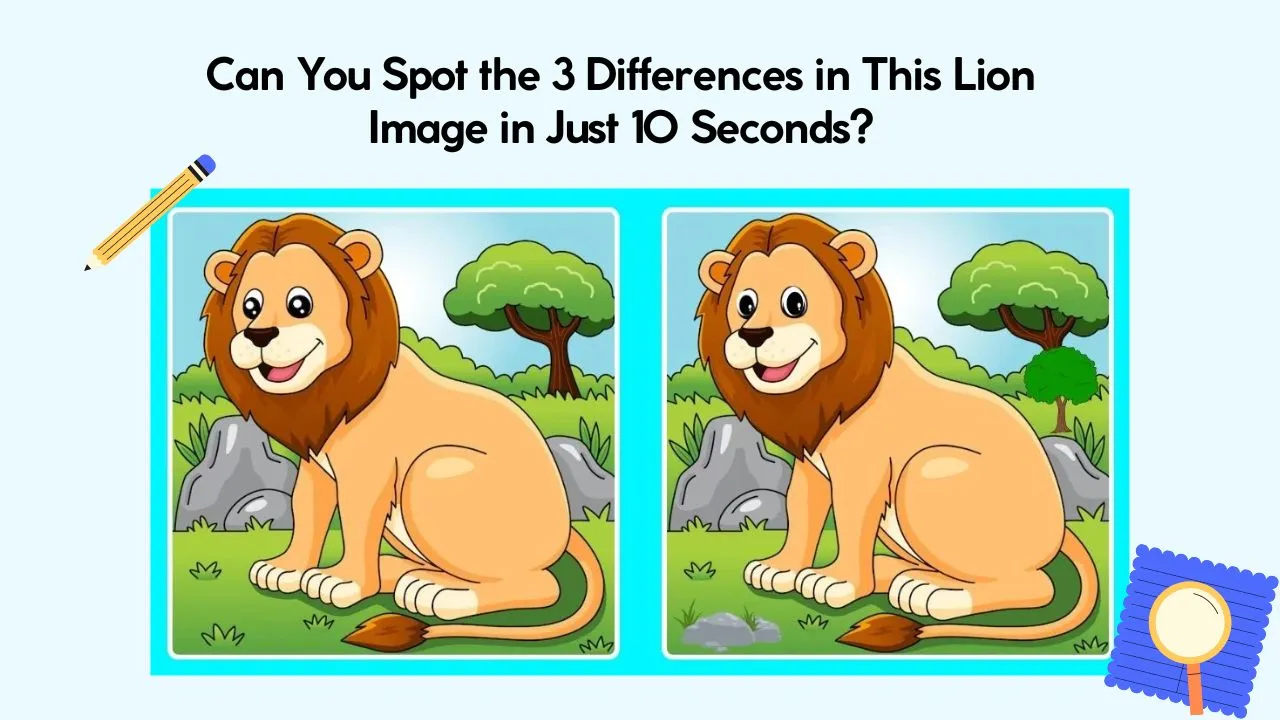Are you prepared for the ultimate test of your visual abilities? This optical illusion spot-the-difference game is not your typical puzzle; only the most perceptive minds will find it difficult to solve. The objective? In ten seconds, identify three minor variations between two nearly identical pictures of a lion. Only individuals with “4K vision,” a fun moniker for those with extremely keen attention to detail, can complete it in the allotted time, according to puzzle enthusiasts and visual specialists.
Now let’s explore why this puzzle is so fascinating and why optical illusions like this one are entertaining and good for your brain.
What Is So Difficult About This Lion Puzzle?
The two pictures of lions appear to be identical at first glance. But take a very close look. Three subtle but deliberate variations are concealed in the fur, background, or shadows. These could be minor adjustments to the lion’s face, background components like leaves or pebbles, or even minor modifications to the lighting and texture. The variations are meant to deceive your brain by being so subtle that they are easy to overlook if you are not paying close attention.
Your ability to observe will be useful in this situation. It can take the typical individual 30 to 60 seconds to see all the variations. Congratulations if you can complete it in ten seconds, though; your visual vision is probably at an extraordinary level.
The Scientific Basis of Spot-the-Difference Problems
These kinds of games do more than just have fun; they increase mental acuity. Spatial awareness, visual processing, and attention to detail are all functions of the right hemisphere of the brain, which is activated by spot-the-difference problems. Finding small differences between two images helps your brain become more adept at processing visual information.

Actually, optical illusion tasks are frequently used into cognitive training programs to enhance focus, memory, and reaction time. In domains like computing, engineering, and even medical, they can also aid in enhancing pattern recognition.
How to Quickly Identify the Differences
Want to increase the likelihood that you will beat the clock? Here are some brief pointers:
- Avoid looking at the entire picture at once. Divide it up and rapidly scan each area.
- Check for symmetry. Since lions are symmetrical by nature, minor adjustments to one side will be noticeable.
- Examine the background. Differences frequently lurk in bushes, rocks, or shadows, so it’s not necessarily about the lion itself.
- Have faith in your intuition. Something is most likely “off” if it feels that way.

This lion spot-the-difference game is a quick cerebral exercise as well as a visual exam. It’s a terrific way to use your brain and have a little fun, regardless of how long it takes you or how quickly you achieve. So, can you see all three of these discrepancies in record time? Try it out to see if you really possess the qualities needed to join the “4K Vision” club!

